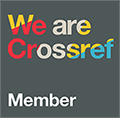Visual and Non-Visual Representations Used by Elementary School Students When Solving Word Problems
DOI:
https://doi.org/10.33308/26674874.2022361344Keywords:
Word Problem Solving, Visual and Non-Visual Representations, Schematic Representation, Pictorial Representation, Symbolic RepresentationAbstract
The aim of this study is to determine the visual and non-visual representations that students use while solving problems and examine whether the assumed differences between these representations predict verbal problem solving performance. For this, the mixed-nested design was chosen. Thematic and relational models were used together. Data were collected from 4th-grade students in Ankara and Adana, Turkey. By examining the correct and incorrect answers to the Mathematical Operations Test and the solutions given to this test, the preferred representation types were determined. As a result of the analyses, although the symbolic representation type was chosen for the solution to each problem in the test, it was seen that the correct answer rates for the questions solved with the schematic representation were higher. In addition, it was determined that the preference of only schematic representation, one of the representation types in the research, predicted problem solving performance. Accordingly, primary school teachers can be trained to include visual representations in their solutions while solving mathematical problems in their classrooms.
Downloads
Downloads
Published
How to Cite
Issue
Section
License
Copyright (c) 2022 Journal of Education for Life

This work is licensed under a Creative Commons Attribution-NonCommercial-NoDerivatives 4.0 International License.
I accept that the Owner of Journal of Education for Life, the Editor, Associate Editors, Reviewers and the Editorial Board cannot be hold responsible regarding the scope, the findings, the discussion and conclusion of the manuscript submitted.
I declare to the editorship of Journal of Education for Life that the manuscript is original and has not been published anywhere else or is not under evaluation process for any other journal.
I approve that I grant Journal of Education for Life as the sole and exclusive right and license to publish for the full legal term of copyright of my manuscript concurring with article 5846 / 22-23-25 while I retain copyright in the work.





